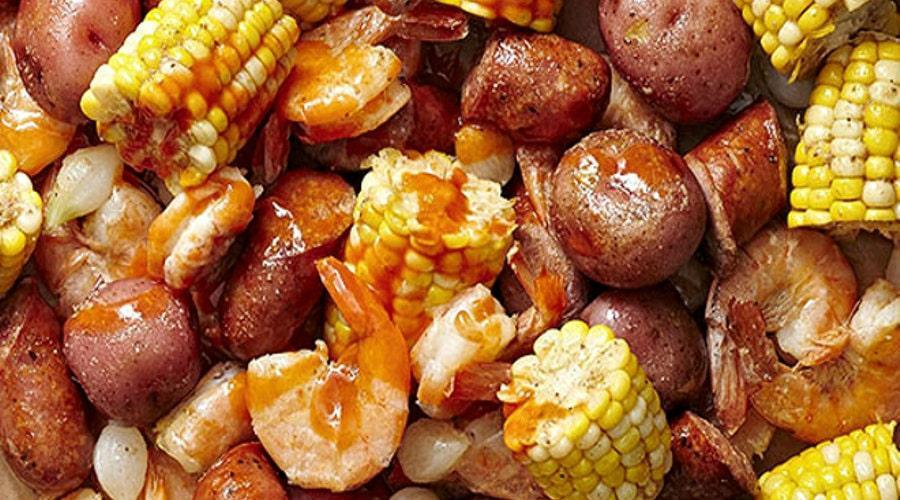
Lowcountry dining has been an experience in healthy, nourishing, fresh foods for as far back as human history in the South Carolina Lowcountry can be traced, 8,000 BC.
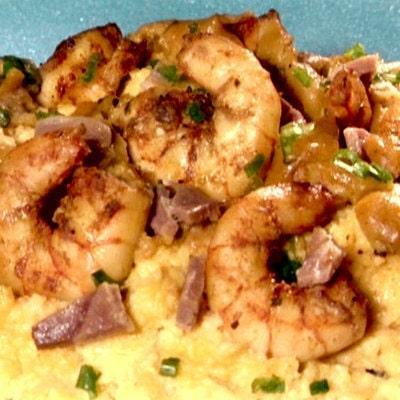 Shrimp and Grits, probably the most popular and most consumed dish of the Lowcountry, has been being prepared in much the same way since the mid sixteenth century when it was introduced to the European settlers by the South Carolina coastal tribes of Native Americans.
Shrimp and Grits, probably the most popular and most consumed dish of the Lowcountry, has been being prepared in much the same way since the mid sixteenth century when it was introduced to the European settlers by the South Carolina coastal tribes of Native Americans.
We are not exactly sure when Native Americans devised the making of Grits from corn, but we do know that Indians were growing maize (an ancestor of modern corn) in South Carolina long before Vasquez de Ayllon, an official in Hispaniola, settled five-hundred colonists on the coast in 1526
Shrimp has been in the surrounding waters millions of years before humans walked the beaches…or anywhere on earth.
So, it is probable that in 8,000 BC a Catawba brave said to his lovely Catawba wife, “It has been a rough day hunting, I really feel like a big pot of Shrimp and Grits”
Dining on Hilton Head Island and nearby Lowcountry communities followed the view that the menu consisted of anything that could be caught, hunted or grown locally and made to taste delicious.
Although there were modest changes in the available fare during and after the 1940s war years, the rule of thumb, ‘…caught, hunted or grown locally and made to taste delicious,’ was about to change dramatically.
In 1956, Charles E. Fraser turned 5,200 acres of Hilton Head into the world-renowned Sea Pines Plantation, thus launching a tourism industry attracting visitors from all over the globe.
These travelers, although they appreciated our dishes using local seafood, vegetables, starches and fruits, wanted diversity.
And diversity they have gotten.
Over the ensuing sixty-two-years, restaurant entrepreneurs from around the world harkened to the Lowcountry’s call for diversified menus and as of this writing there are dining facilities delivering a choice of twenty-one cuisines in addition to traditional Lowcountry; American, Asian, Australian, Austrian, Barbecue, Brazilian, Caribbean, Continental, Creole, Cajun, Cuban, Fondue, French, Fusion, Greek, Hibachi, Italian, Japanese, Latin American, Lebanese, Mexican.
If the category is in the above collection there is a dining experience available in the Lowcountry.
Here are some brief descriptions and photo illustrations of selected fare.
French Cuisine
French cuisine is all about layering flavors, mastering basic techniques, and savoring every bite.
Briefly, French cuisine can be divided into two distinct categories, French National Cuisine and French Regional Cuisine.
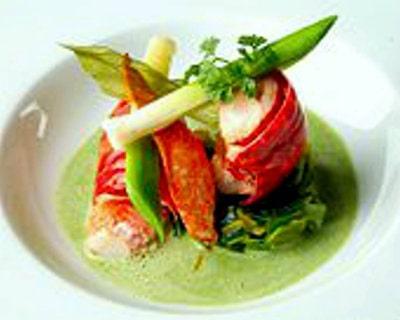 There are thirteen distinct regions making up the class Regional; Paris and Île-de-France, Champagne, Lorraine, and Alsace, Nord Pas-de-Calais, Picardy, Normandy, and Brittany, Loire Valley and central France, Burgundy and Franche-Comté, Auvergne-Rhône-Alpes, Poitou-Charentes and Limousin, Bordeaux, Périgord, Gascony, and Basque country, Toulouse, Quercy, and Aveyron, Roussillon, Languedoc, and Cévennes, Provence-Alpes-Côte d'Azur, Corsica, French Guiana. They are as different from each other as from French National Cuisine.
There are thirteen distinct regions making up the class Regional; Paris and Île-de-France, Champagne, Lorraine, and Alsace, Nord Pas-de-Calais, Picardy, Normandy, and Brittany, Loire Valley and central France, Burgundy and Franche-Comté, Auvergne-Rhône-Alpes, Poitou-Charentes and Limousin, Bordeaux, Périgord, Gascony, and Basque country, Toulouse, Quercy, and Aveyron, Roussillon, Languedoc, and Cévennes, Provence-Alpes-Côte d'Azur, Corsica, French Guiana. They are as different from each other as from French National Cuisine.
When we in the United States think of a French Restaurant, nine times out of ten their menu is derived from French National Cuisine.
We think of elegance and formality…and pretty much we would be right. A meal often consists of three courses, hors d'œuvre or entrée (introductory course, sometimes soup), plat principal (main course), fromage (cheese course) or dessert, sometimes with a salad offered before the cheese or dessert.
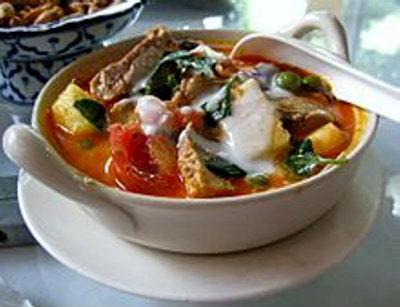 Fusion Cuisine
Fusion Cuisine
This is a kind of ‘melting pot’ of the cuisine of varied countries and cultures. Since it is entirely up to the chef as to which dishes of which culture are mixed and matched, it is difficult to give specifics. Let it be said, a Fusion Restaurant dining experience is always enjoyable and most assuredly an adventure.
Italian Cuisine
 Italian cuisine is generally characterized by its simplicity, with many dishes having only two to four main ingredients. Italian cooks rely chiefly on the quality of the ingredients rather than on elaborate preparation.
Italian cuisine is generally characterized by its simplicity, with many dishes having only two to four main ingredients. Italian cooks rely chiefly on the quality of the ingredients rather than on elaborate preparation.
Dishes can range from creations that can actually make use of many local Lowcountry ingredients such as Tuscan Tomato Bread Soup with Steamed Mussels; a thick and flavorful traditional Italian bread pudding with the added delicious ingredient of steamed mussels with their broth.
…and of course, there is America’s most loved bit of Italian cuisine, The Pizza.
Lebanese Cuisine
Lebanese Cuisine is a style of cooking that includes an abundance of whole grains, fruits, vegetables, starches, fresh fish and seafood; animal fats are consumed sparingly. Poultry is eaten more often than red meat. It also includes copious amounts of garlic and olive oil, often seasoned by lemon juice. Chickpeas and parsley are also basics of the Lebanese diet.
Well known savory dishes include baba ghanouj, a dip made of char-grilled eggplant; falafel, small deep-fried patties made of highly spiced ground chickpeas, fava beans, or a combination of the two; and shawarma, a sandwich with marinated meat skewered and cooked on large rods.
Sushi
A most interesting bit of information uncovered in the research for this article.
Sushi is a Japanese dish of specially prepared vinegared rice, usually with some sugar and salt, combined with a variety of ingredients, such as seafood, vegetables, and occasionally tropical fruits.
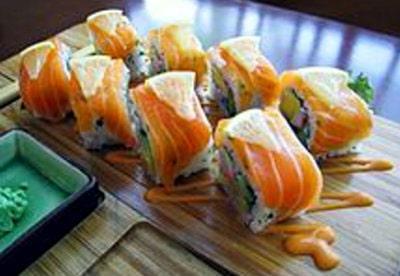 Styles of sushi and its presentation vary widely, but the key ingredient is "sushi rice", The term sushi is no longer used in its original context and literally means "sour-tasting."
Styles of sushi and its presentation vary widely, but the key ingredient is "sushi rice", The term sushi is no longer used in its original context and literally means "sour-tasting."
Sushi is sometimes confused with sashimi, a related Japanese dish consisting of thinly sliced raw fish, or occasionally meat, and an optional serving of rice.
And all this time, diners, who voraciously gobble down their trays of raw fish thought they were eating Sushi, when only the vegetarian elements on the tray are true Sushi.
Shrimp & Grits High Cuisine
Lastly, I would like my readers to take a look at my closing dish and compare it with my opening dish.
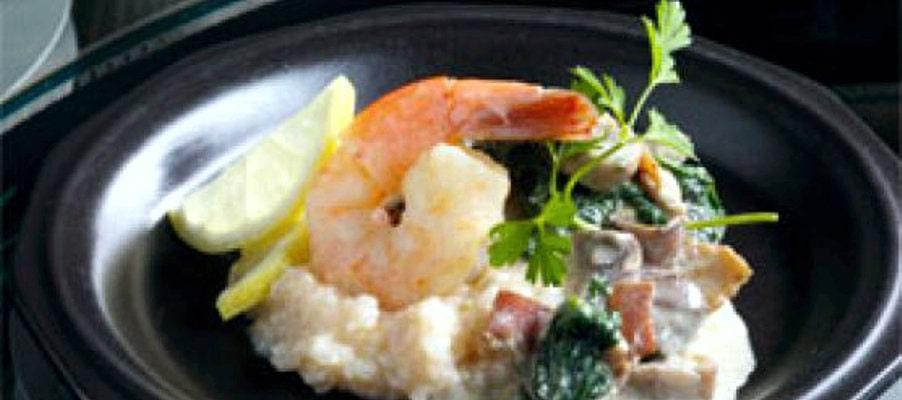
I wonder if the high cuisine version of Shrimp and Grits is as ‘comforting’ as that made by the coastal Indians?
Bon Appétit!
Posted by Bill True on
Leave A Comment